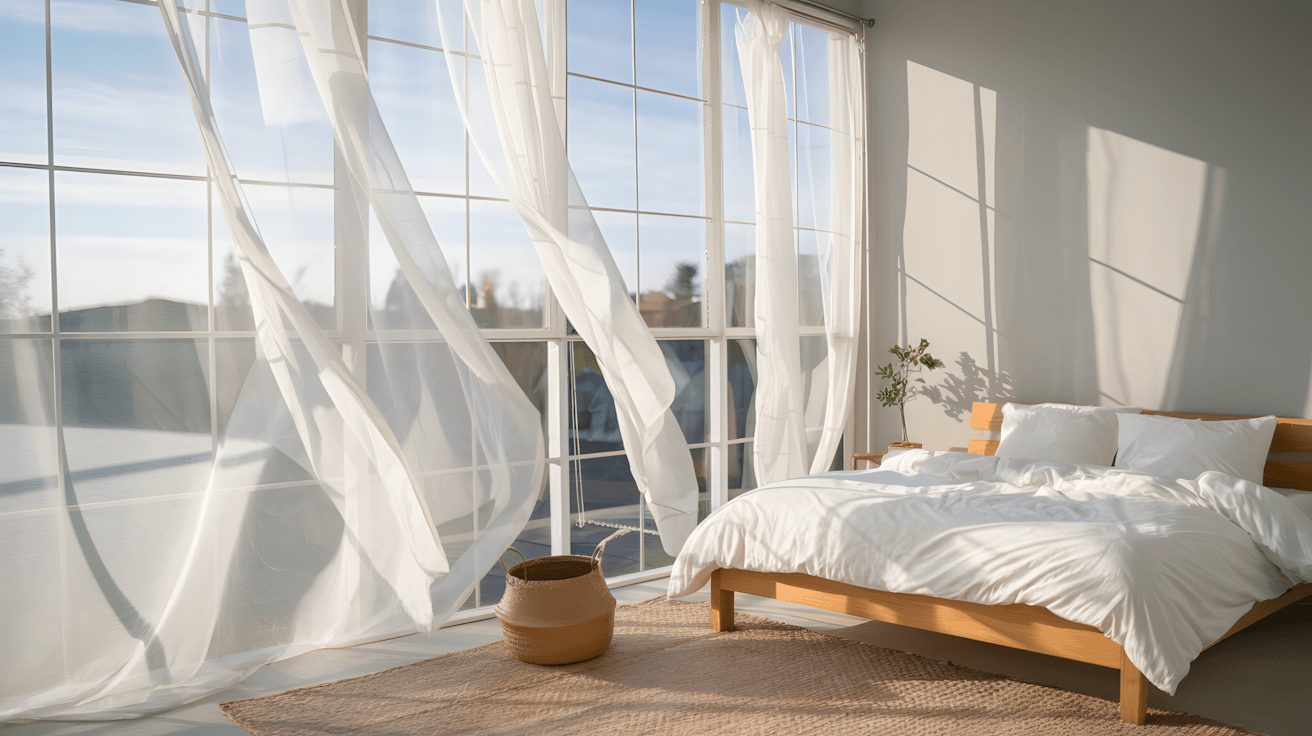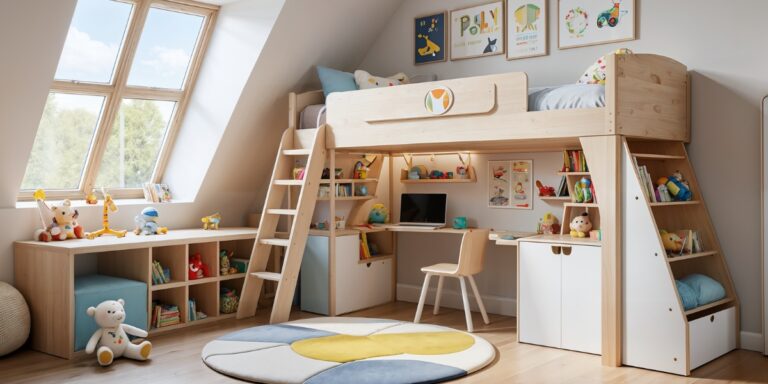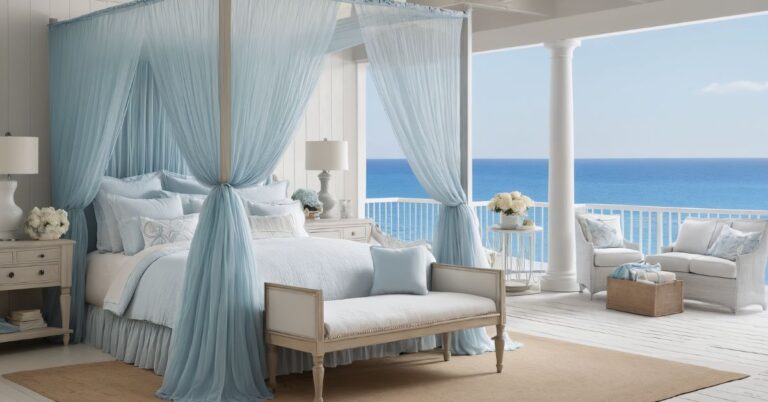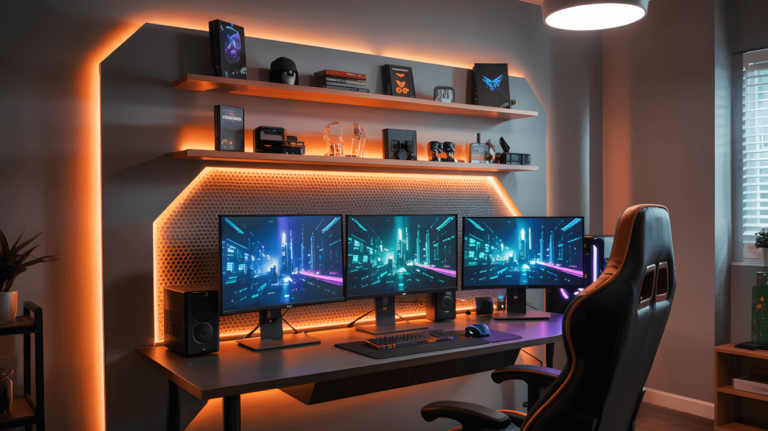After designing bedrooms inspired by Scandinavian principles for families across different climates and lifestyles, I’ve discovered that creating an authentic Nordic bedroom requires understanding the deeper philosophy behind the aesthetic—not just copying the Instagram-worthy white walls and minimalist furniture.
From my experience working with homeowners who want to embrace Scandinavian design, I’ve learned which elements actually improve sleep quality and daily well-being, and which trendy interpretations fall short of creating the genuine comfort and functionality that define true Nordic living.
These 15 Scandinavian bedroom ideas represent principles that have proven successful in creating restful, livable spaces.
Foundational Color and Light Principles
1. Soft Neutral Palettes That Actually Work
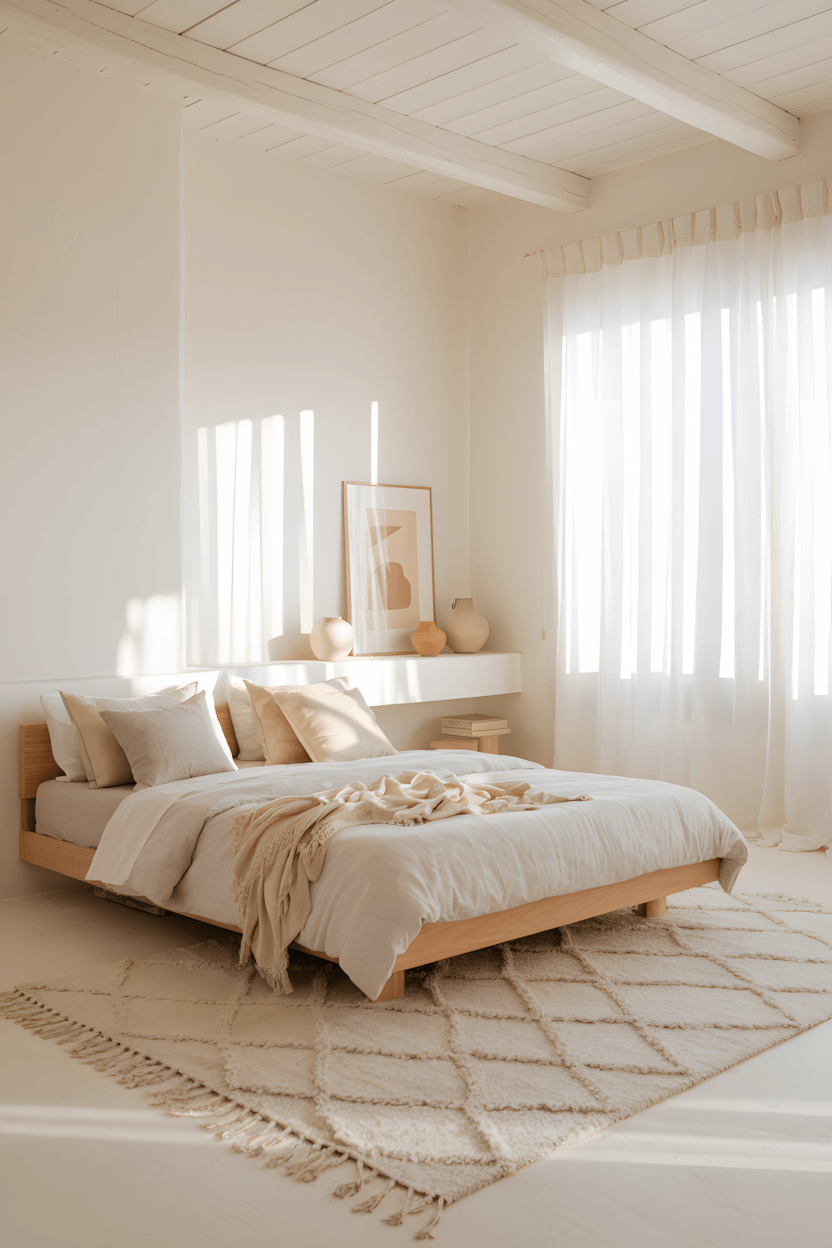
The Scandinavian neutral palette serves a deeper purpose than just looking clean—it’s designed to maximize limited northern light and create psychological calm.
Key Elements:
- Whites, soft grays, and warm beiges in strategic layers – reflects available light while preventing stark coldness
- Monochromatic variations with subtle tonal shifts – adds visual interest without creating stimulation that disrupts sleep
- Natural undertones that complement skin tones – ensures the space feels flattering and welcoming
- Light-reflective surfaces positioned to maximize daylight – compensates for shorter Nordic winter days
Why it works: I’ve found that true Scandinavian neutrals aren’t just white—they’re carefully selected to work with natural light patterns and support circadian rhythms.
2. Layered Textures for Genuine Warmth
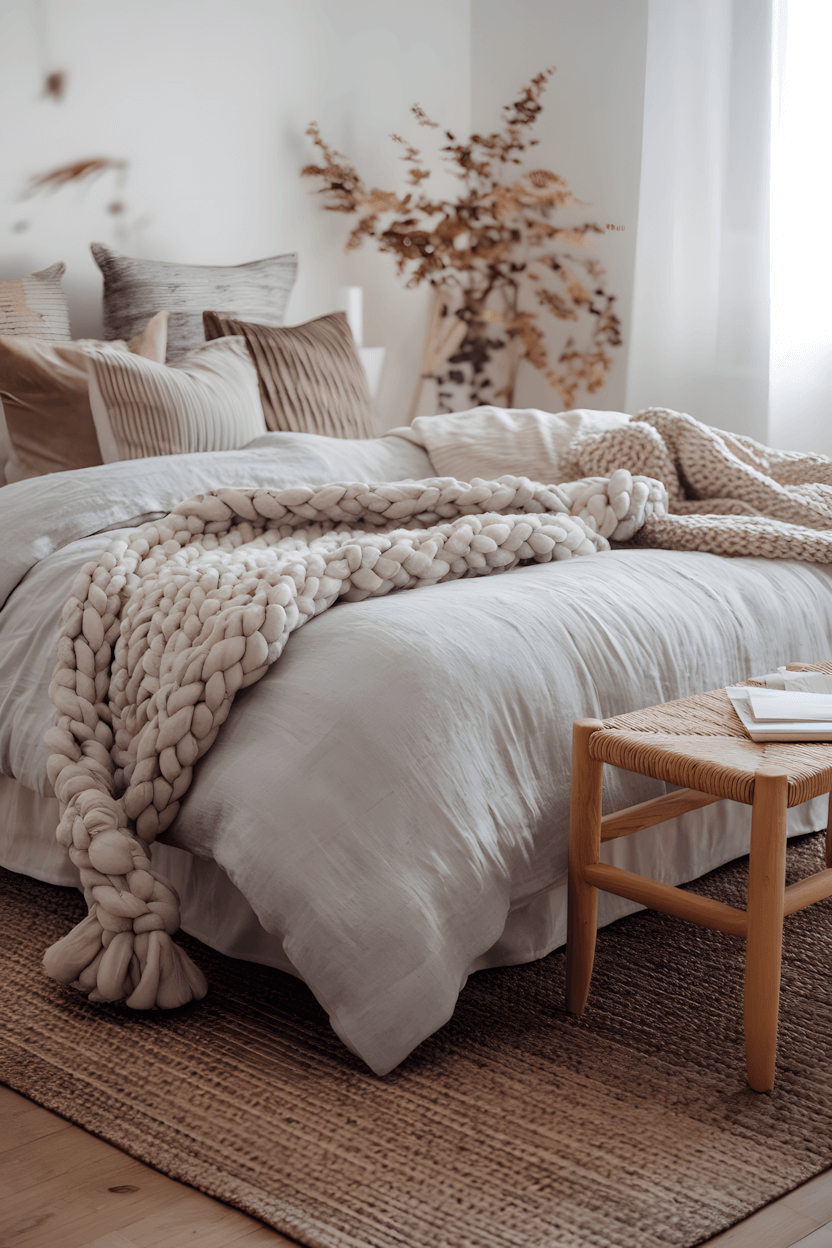
Textile layering in Scandinavian design isn’t decorative—it’s essential for creating physical and psychological warmth during long, cold seasons.
Key Elements:
- Linen, wool, and cotton in complementary weights – provides temperature regulation for seasonal changes
- Chunky knit throws over quality base linens – creates tactile comfort that encourages relaxation
- Natural fiber rugs for warmth and sound absorption – improves comfort while reducing noise in multi-story homes
- Breathable materials that prevent overheating – ensures year-round comfort without seasonal bedding changes
Textile strategy: Authentic Scandinavian layering prioritizes natural materials that improve actual comfort, not just visual appeal.
3. Minimalism with Intentional Personality
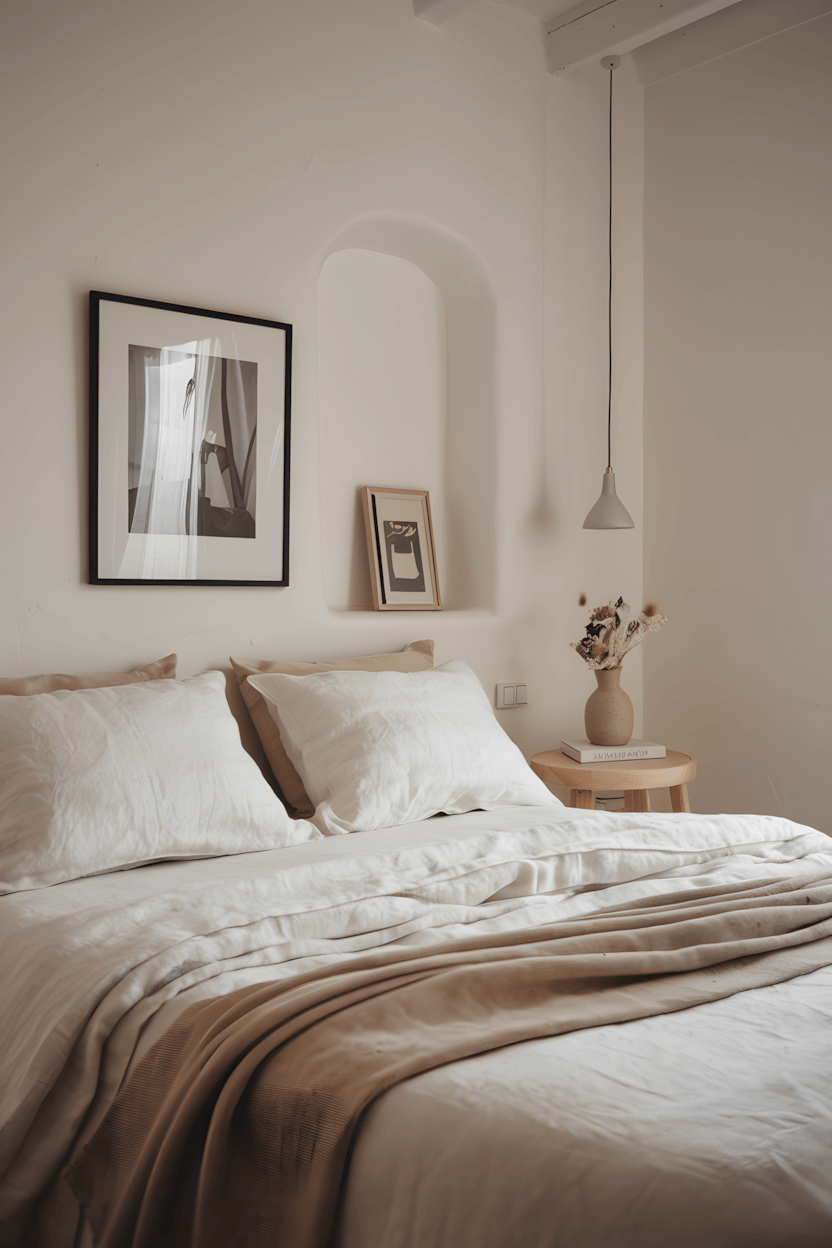
True Nordic minimalism isn’t about emptiness—it’s about intentional curation that supports well-being and reflects personal values.
Key Elements:
- Carefully chosen meaningful objects over mass-produced décor – creates personal connection without clutter
- Handmade or locally crafted pieces – supports the Scandinavian tradition of quality craftsmanship
- Functional items that serve multiple purposes – reduces visual clutter while meeting practical needs
- Natural materials with honest construction – provides lasting value and authentic character
Philosophy insight: Nordic design philosophy emphasizes quality over quantity, which reduces decision fatigue and creates lasting satisfaction.
Comfort and Well-Being Focus
4. Hygge-Inspired Ambiance That’s More Than Candles
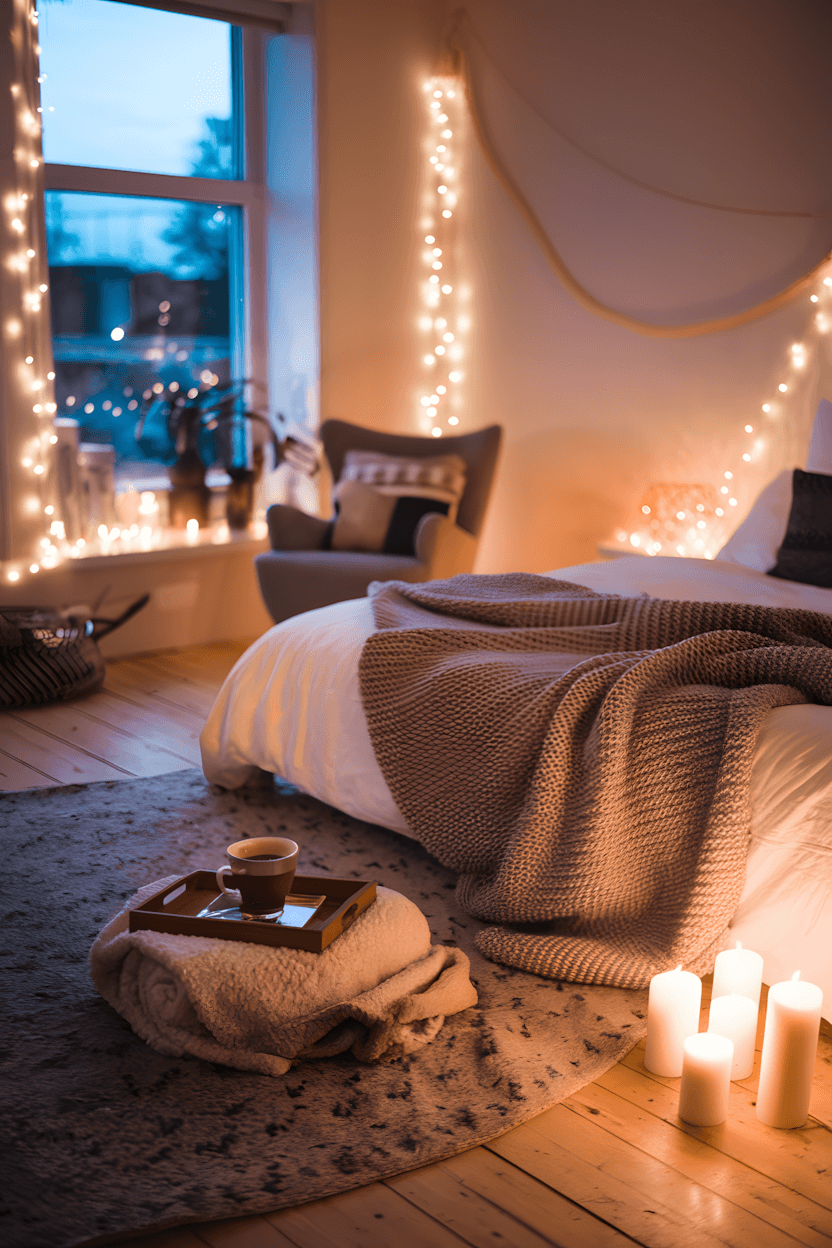
Hygge represents a genuine approach to creating comfort and contentment, not just aesthetic styling with candles and throws.
Key Elements:
- Soft, adjustable lighting for different activities – supports natural circadian rhythms and reduces eye strain
- Comfortable seating positioned for relaxation – encourages genuine rest and social connection
- Natural scents from real materials, not artificial fragrance – uses wood, wool, and plants for authentic aromatherapy
- Temperature control through layering rather than heating – creates personal comfort zones efficiently
Hygge reality: True hygge is about creating conditions for genuine well-being, not just copying the visual elements often seen online.
5. Natural Light Optimization for Health
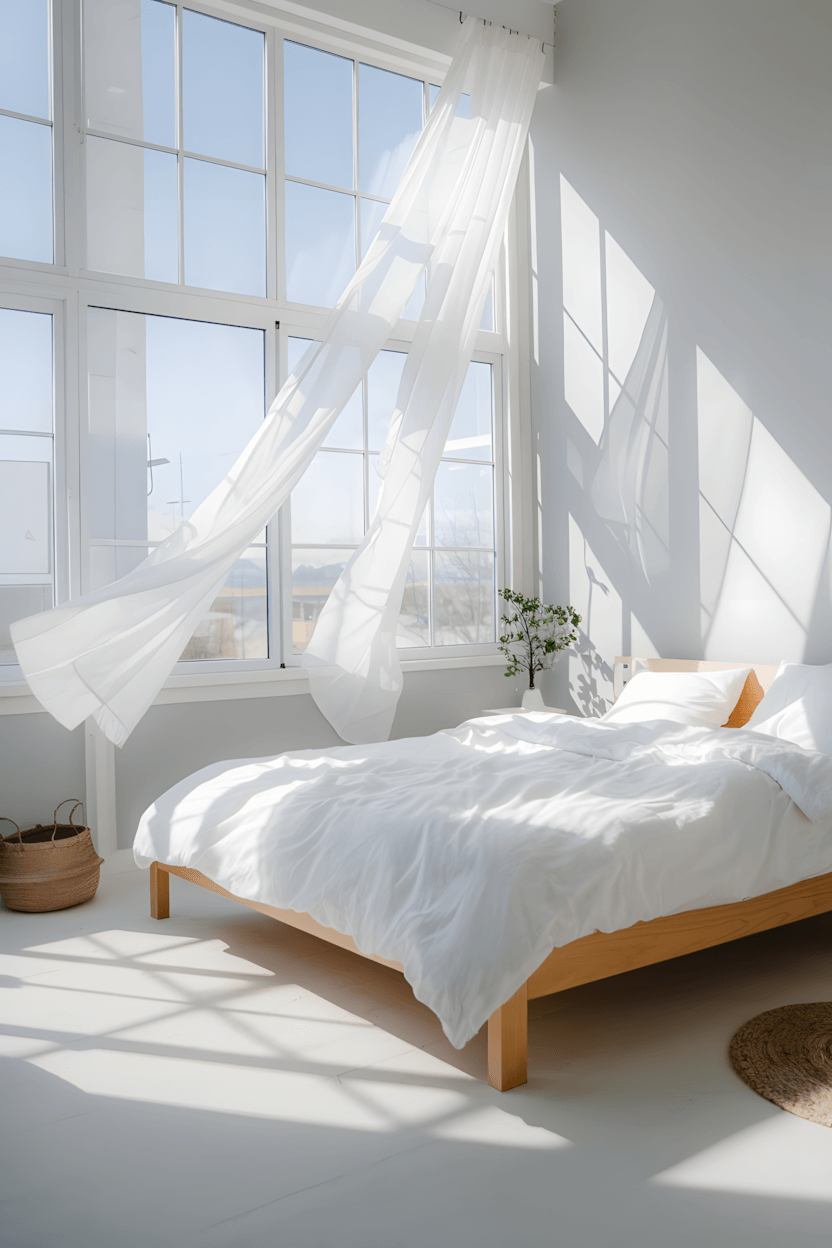
Scandinavian light management addresses the practical challenge of limited daylight during winter months while supporting mental health.
Key Elements:
- Sheer curtains that maximize daylight penetration – critical for vitamin D synthesis and mood regulation
- Strategic mirror placement to reflect available light – doubles natural illumination without electricity
- Light-colored surfaces on walls and ceilings – bounces precious daylight throughout the space
- Minimal window treatments during daylight hours – prioritizes health benefits over privacy during day
Health consideration: Proper natural light exposure significantly impacts sleep quality, mood, and overall well-being in northern climates.
Color Depth and Natural Elements
6. Muted Earthy Tones for Grounding
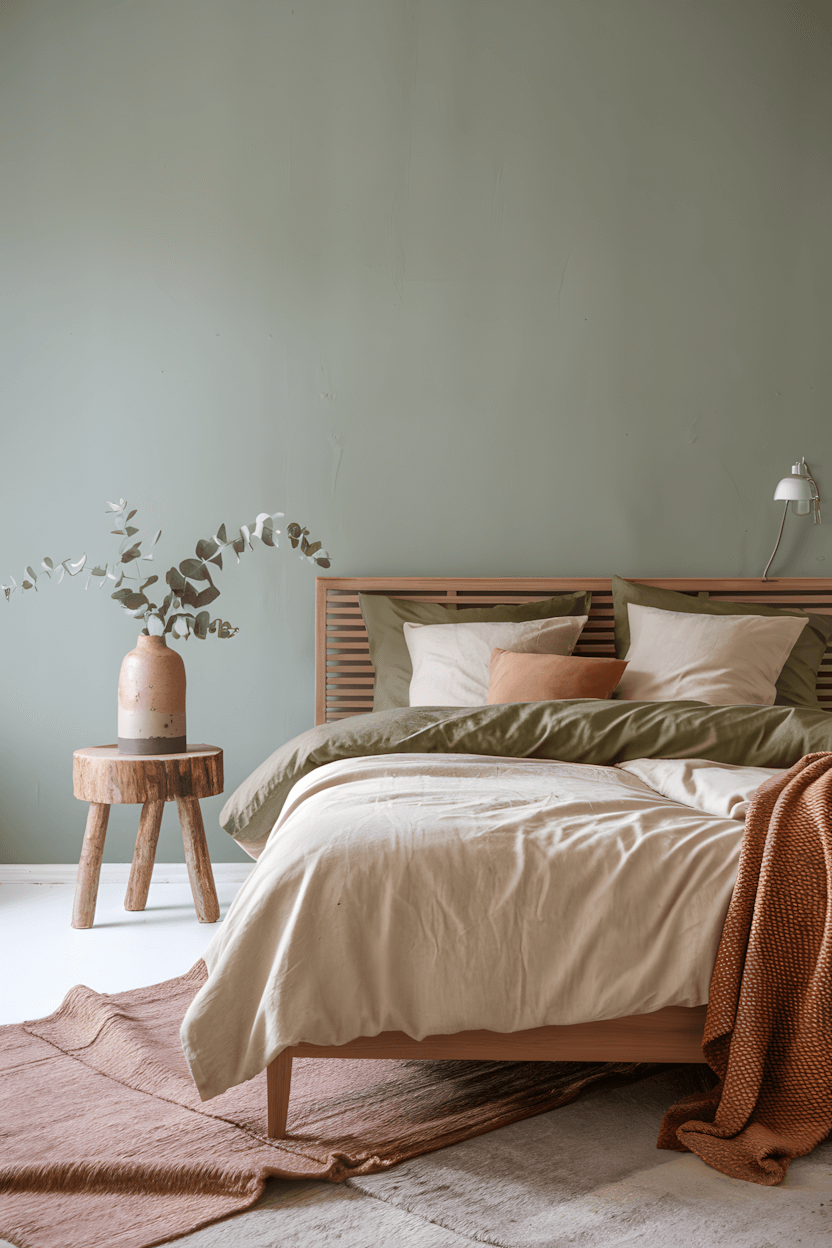
Scandinavian color palettes include earth tones not for trend appeal, but to maintain connection with nature during indoor-focused seasons.
Key Elements:
- Muted greens, soft browns, and dusty pinks – provides subtle visual warmth without overstimulation
- Colors inspired by Nordic landscapes – creates subconscious connection to natural environments
- Seasonal color adjustments through textiles – allows space adaptation without major renovations
- Natural dye colors that age beautifully – ensures longevity and authenticity over artificial bright colors
Biophilic benefit: Earth tones provide psychological grounding and stress reduction, especially important during extended indoor periods.
7. Functional Storage That Maintains Serenity
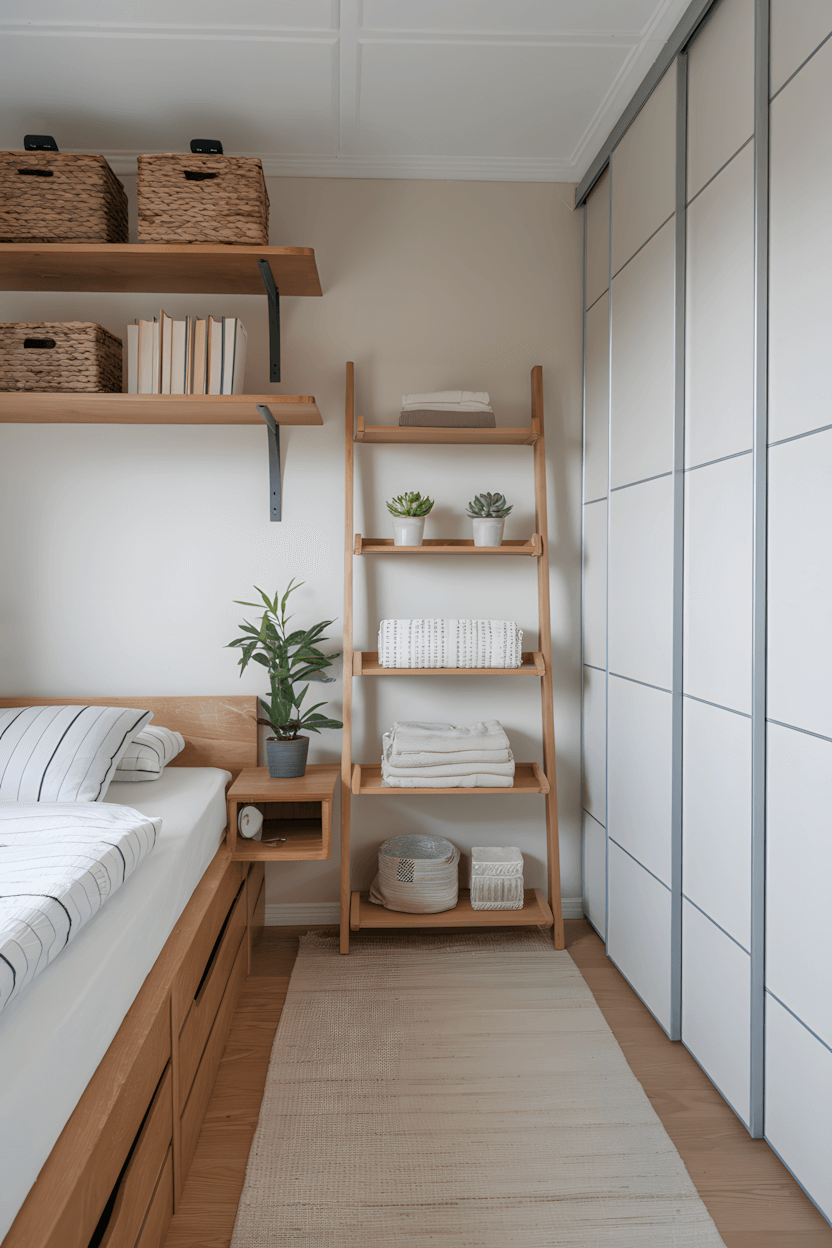
Nordic storage solutions address the practical need for organization while supporting the mental clarity that comes from uncluttered spaces.
Key Elements:
- Built-in solutions that become part of architecture – provides storage without consuming visual space
- Natural material storage that complements décor – maintains aesthetic cohesion while serving practical needs
- Accessible organization systems for daily items – reduces stress and decision fatigue in daily routines
- Seasonal storage for climate-appropriate bedding – accommodates significant temperature variations efficiently
Organization psychology: Clutter reduction genuinely improves sleep quality and reduces anxiety, making functional storage essential rather than optional.
8. Simple Wood Elements for Natural Connection
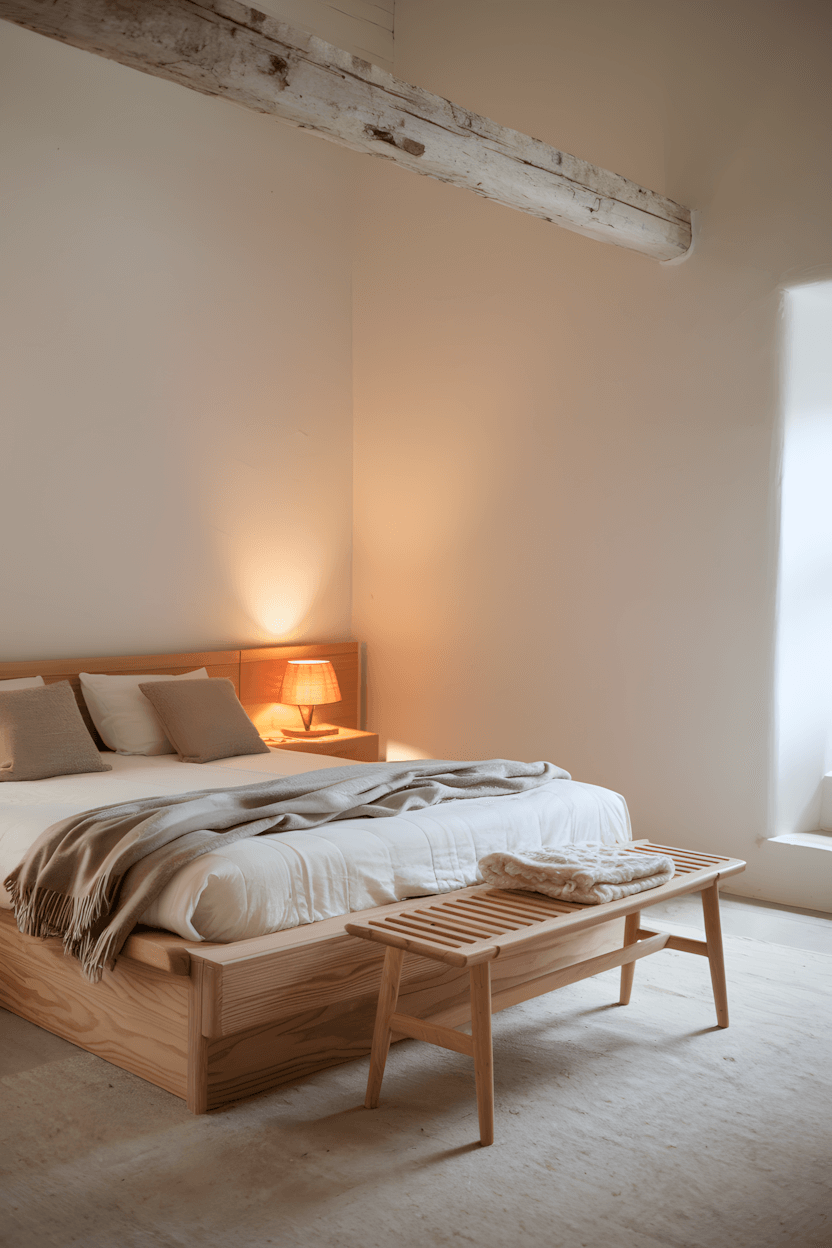
Wood use in Scandinavian design serves both practical and psychological purposes, connecting inhabitants to forests and natural cycles.
Key Elements:
- Light woods like pine, birch, and oak – reflects natural Nordic forest environments
- Simple construction that showcases material beauty – reduces visual complexity while highlighting natural grain
- Furniture scaled appropriately for bedroom use – prevents overwhelming while maintaining functionality
- Natural finishes that age gracefully – develops character over time rather than requiring replacement
Material connection: Natural wood provides tactile and visual connection to nature, which supports stress reduction and well-being.
Lighting and Atmosphere
9. Statement Lighting for Function and Mood
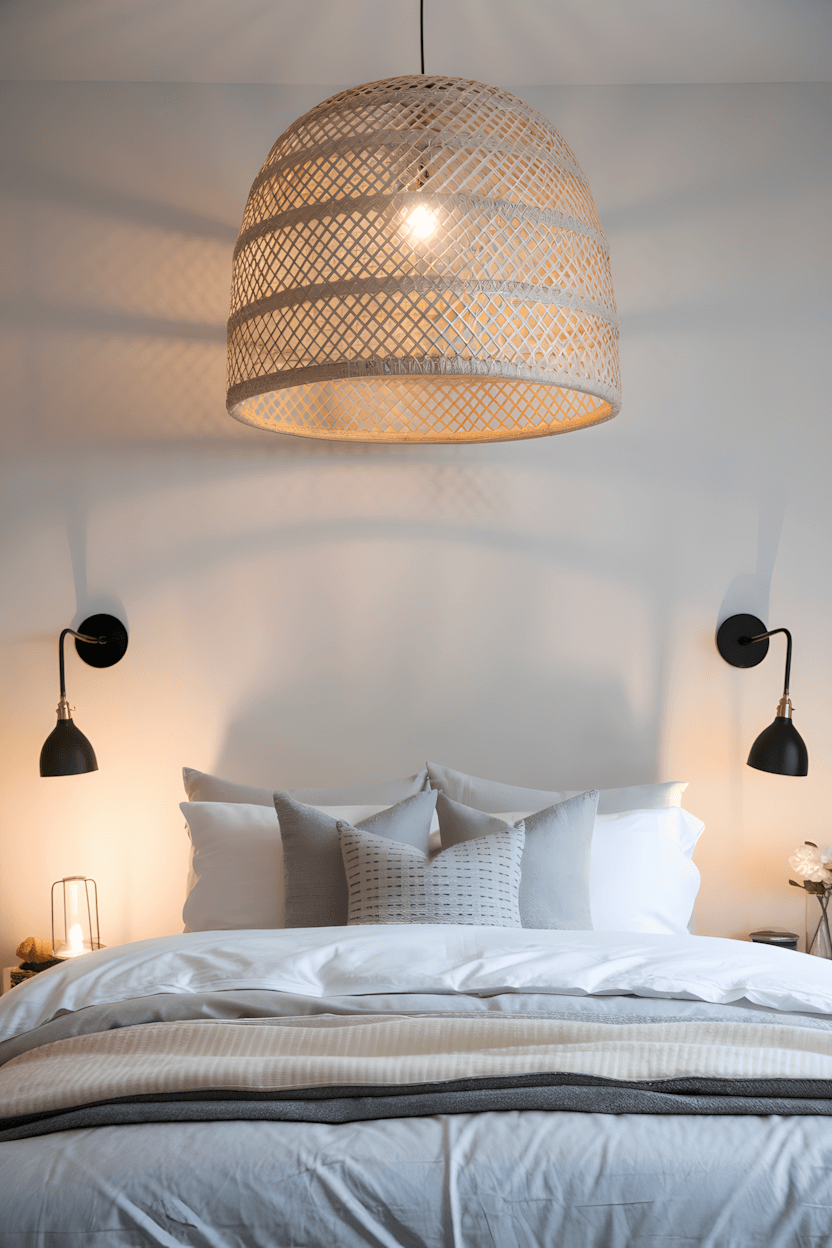
Nordic lighting design addresses practical illumination needs while creating atmosphere that supports relaxation and comfort.
Key Elements:
- Pendant lights positioned for task and ambient illumination – provides functional lighting without harsh overhead glare
- Natural material fixtures like rattan or wood – maintains connection to organic elements
- Adjustable lighting for different times of day – supports natural circadian rhythms
- Warm light temperatures for evening relaxation – promotes melatonin production for better sleep
Lighting science: Proper bedroom lighting significantly impacts sleep quality and mood regulation, making thoughtful fixture selection crucial.
10. Monochrome Accents for Visual Balance
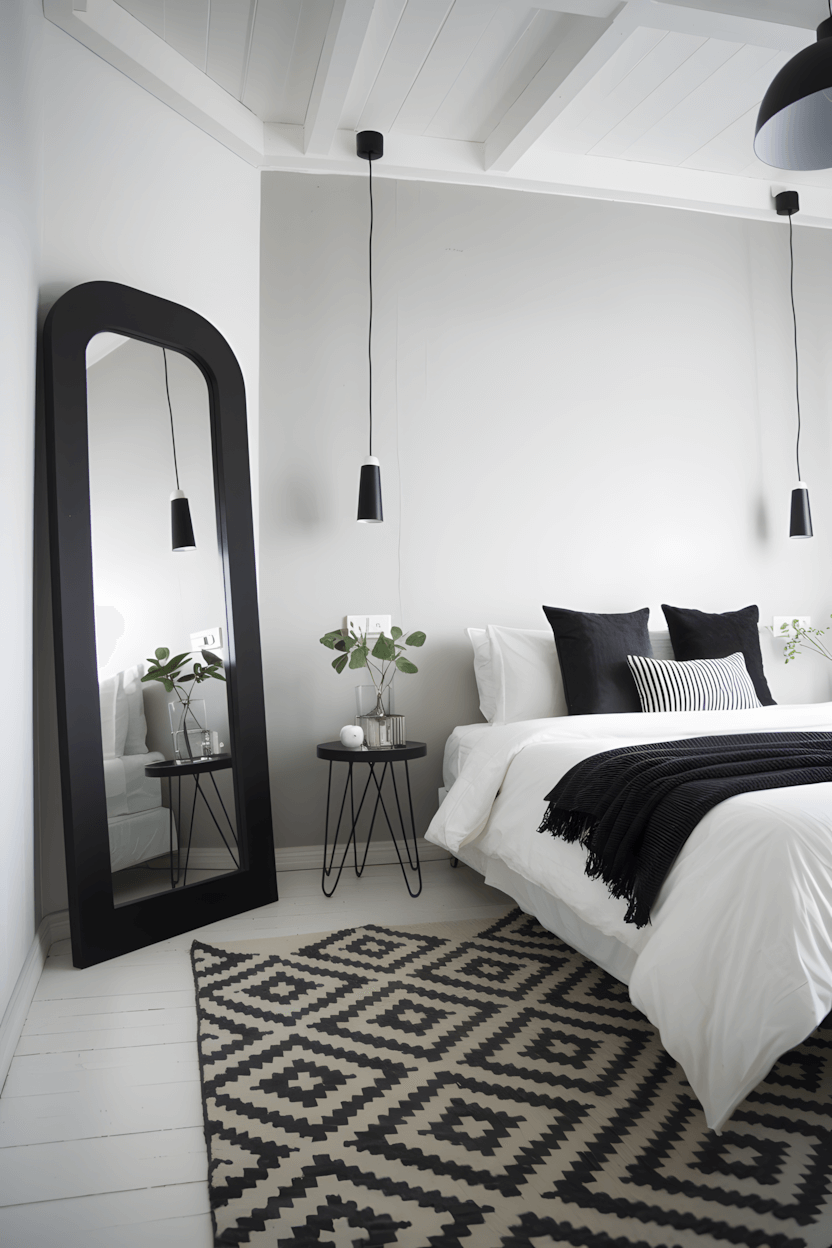
Strategic dark elements in Nordic design provide visual anchoring and prevent the psychological discomfort of completely washed-out spaces.
Key Elements:
- Black or dark gray accents in small doses – creates visual weight and prevents bland uniformity
- Strategic placement for maximum impact – uses contrast thoughtfully rather than randomly
- Natural materials in darker tones – maintains material authenticity while providing color contrast
- Balanced proportions to prevent overwhelming – ensures dark elements enhance rather than dominate
Visual psychology: Appropriate contrast prevents the eye strain and spatial disorientation that can result from excessive uniformity.
Comfort Zones and Personal Spaces
11. Reading Nooks That Actually Get Used
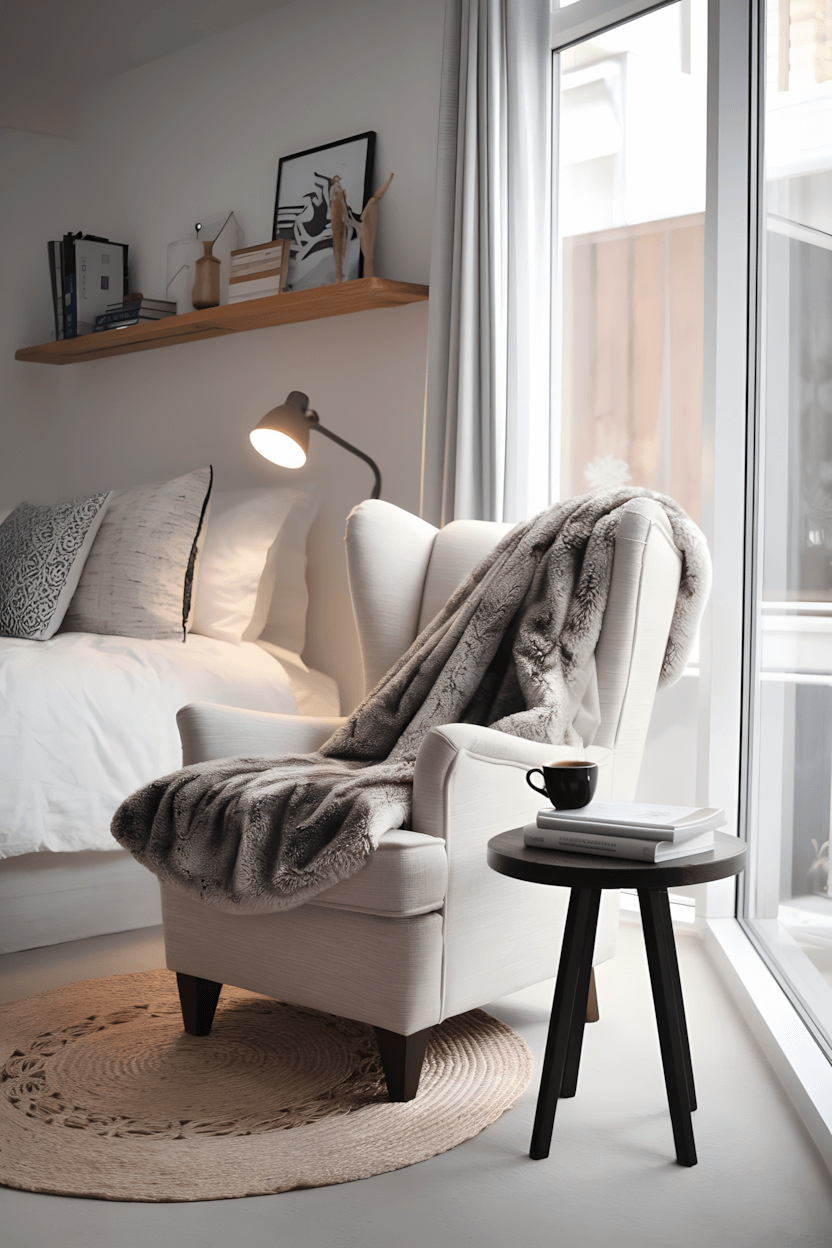
Nordic reading corners address the practical need for comfortable retreat spaces during long indoor seasons.
Key Elements:
- Comfortable seating positioned for natural light – ensures adequate illumination for reading without eye strain
- Proper back and arm support for extended sitting – prevents discomfort during longer reading sessions
- Accessible storage for books and personal items – keeps reading materials organized and within reach
- Temperature-appropriate textiles for seasonal comfort – ensures usability throughout seasonal temperature changes
Usage reality: Reading nooks need genuine comfort and functionality to be used regularly rather than just photographing well.
12. Nature Integration for Mental Health
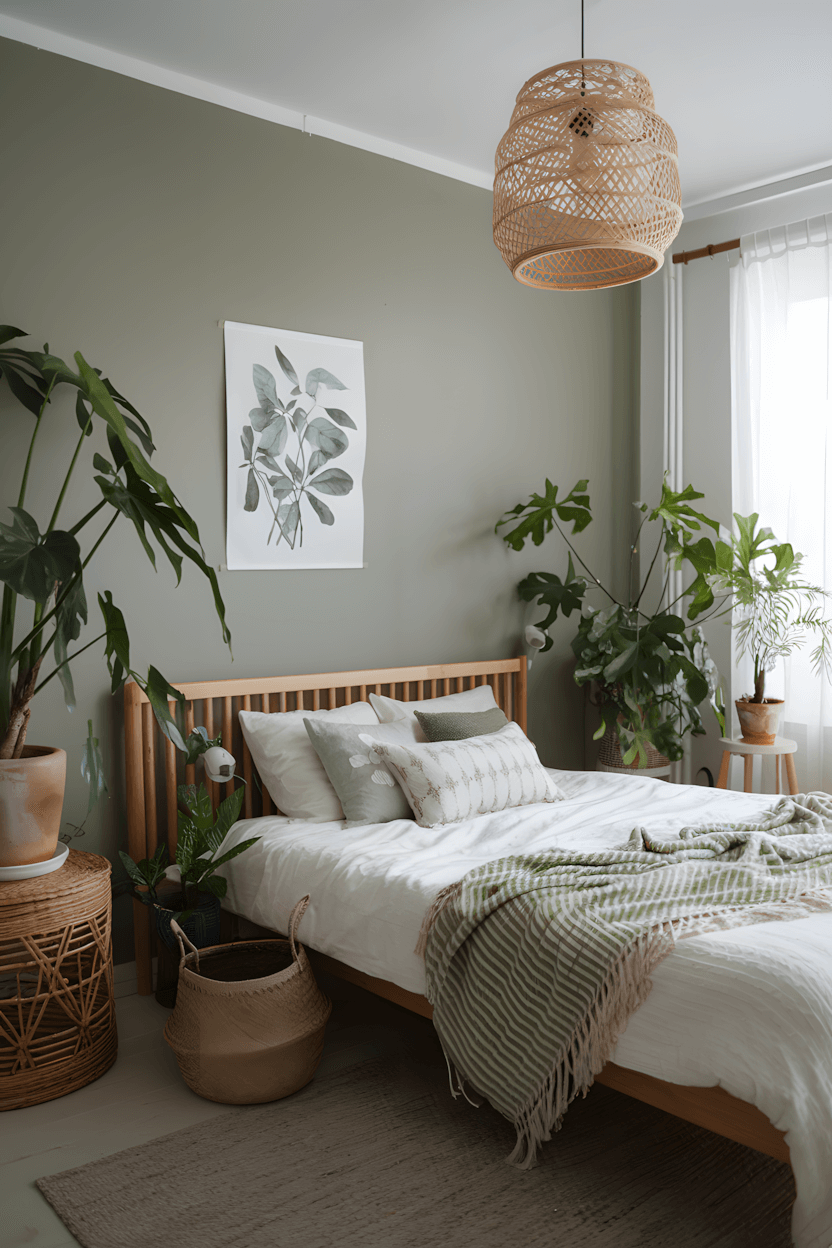
Bringing natural elements indoors addresses the psychological need for nature connection during seasons when outdoor time is limited.
Key Elements:
- Low-maintenance plants appropriate for bedroom conditions – provides air purification without requiring intensive care
- Natural materials like wood, stone, and fiber – creates tactile connection to outdoor environments
- Seasonal natural elements like branches or dried flowers – allows connection to changing seasons indoors
- Air-purifying plants that improve sleep quality – provides functional benefit beyond aesthetic appeal
Mental health benefit: Nature connection significantly reduces stress hormones and improves overall psychological well-being.
Craftsmanship and Authenticity
13. Handmade and Artisan Elements
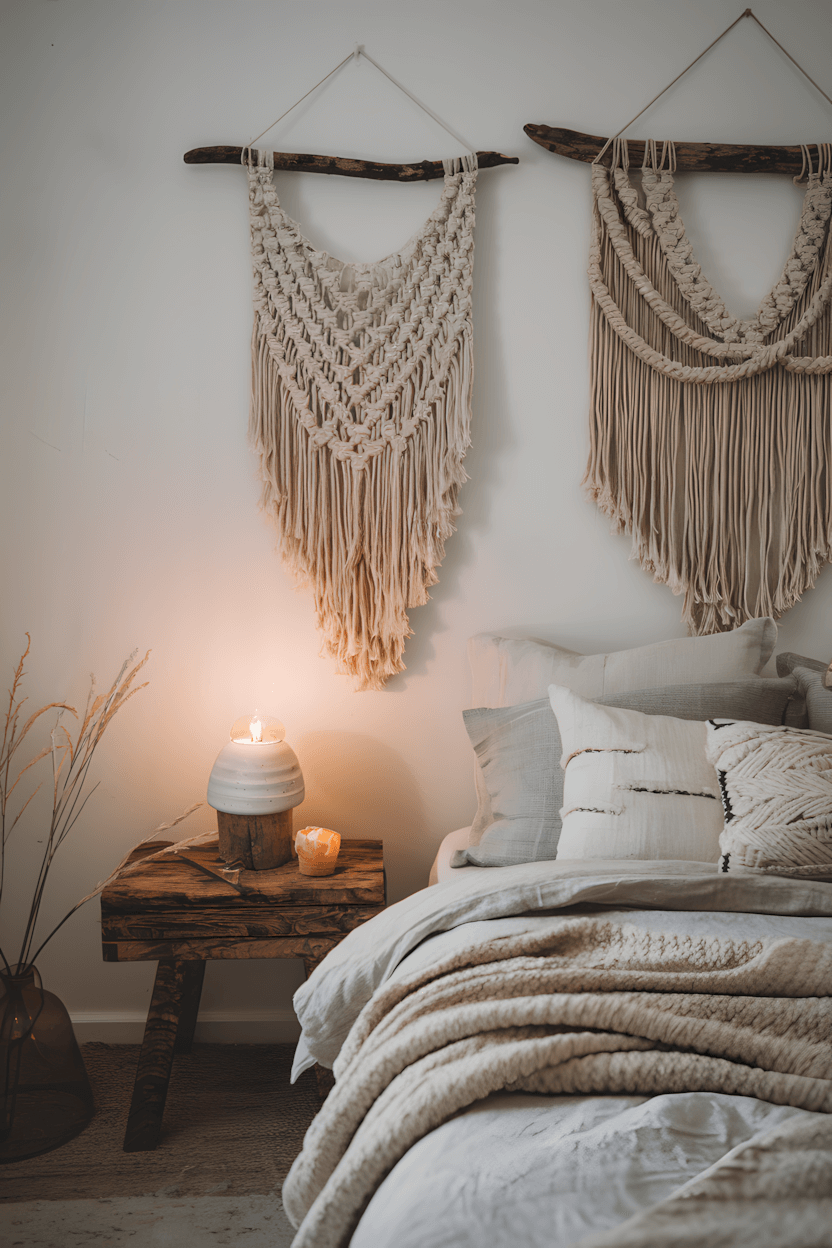
Scandinavian design traditionally values craftsmanship as a way to support local communities and ensure quality that lasts generations.
Key Elements:
- Locally made pottery, textiles, or furniture – supports traditional crafts while ensuring authentic materials
- Quality construction that improves with age – provides lasting value rather than requiring frequent replacement
- Unique pieces that reflect personal values – creates individual character within design principles
- Natural material aging that develops patina – ensures beauty that deepens over time
Sustainability principle: Quality craftsmanship reduces environmental impact through longevity and supports traditional skills preservation.
14. Subtle Pattern Integration
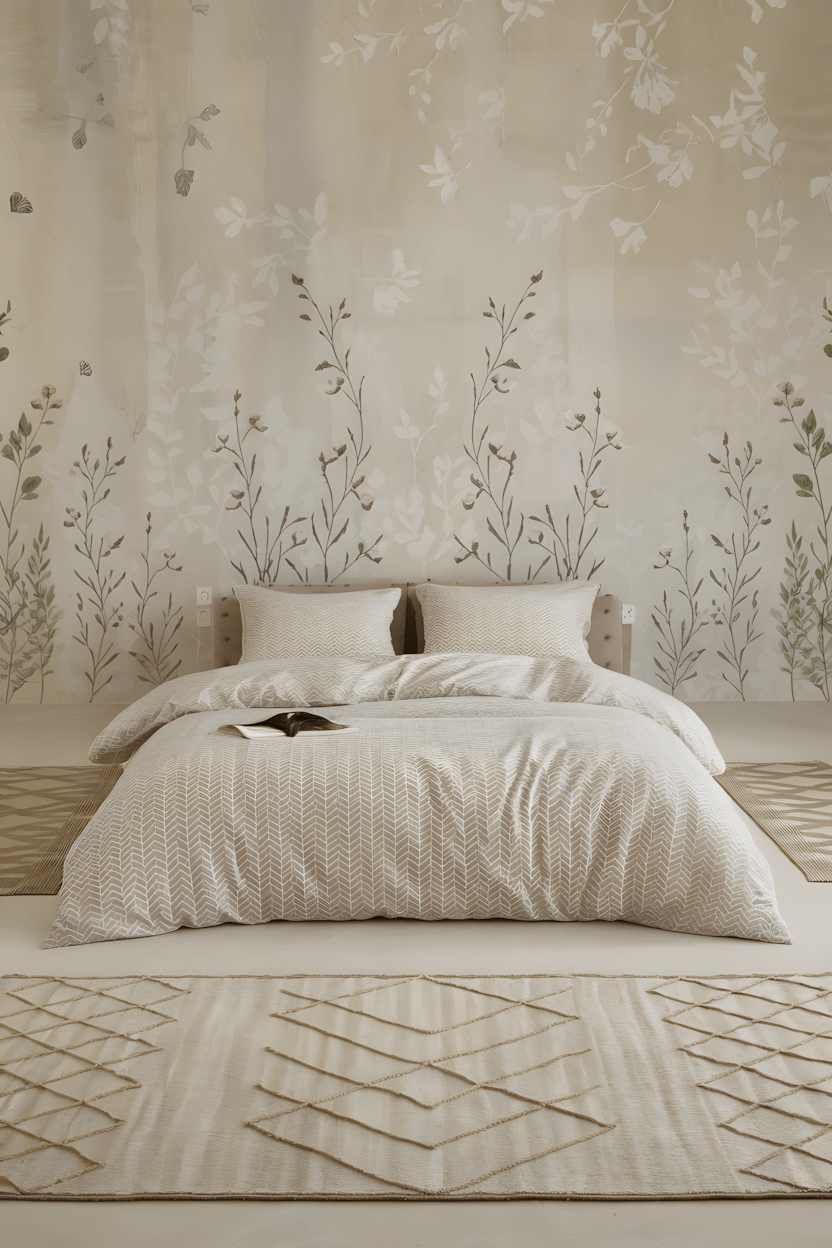
Nordic patterns serve specific cultural and practical purposes beyond mere decoration, often relating to traditional crafts and local nature.
Key Elements:
- Geometric patterns inspired by traditional crafts – connects to cultural heritage and craftsmanship traditions
- Nature-inspired motifs in muted colors – maintains connection to Nordic landscapes and seasons
- Patterns scaled appropriately for bedroom spaces – provides visual interest without creating overstimulation
- Traditional techniques applied to modern applications – bridges historical knowledge with contemporary living
Cultural connection: Authentic Scandinavian patterns carry cultural meaning and craftsmanship knowledge rather than being purely decorative.
15. Serene Atmosphere Through Intentional Design
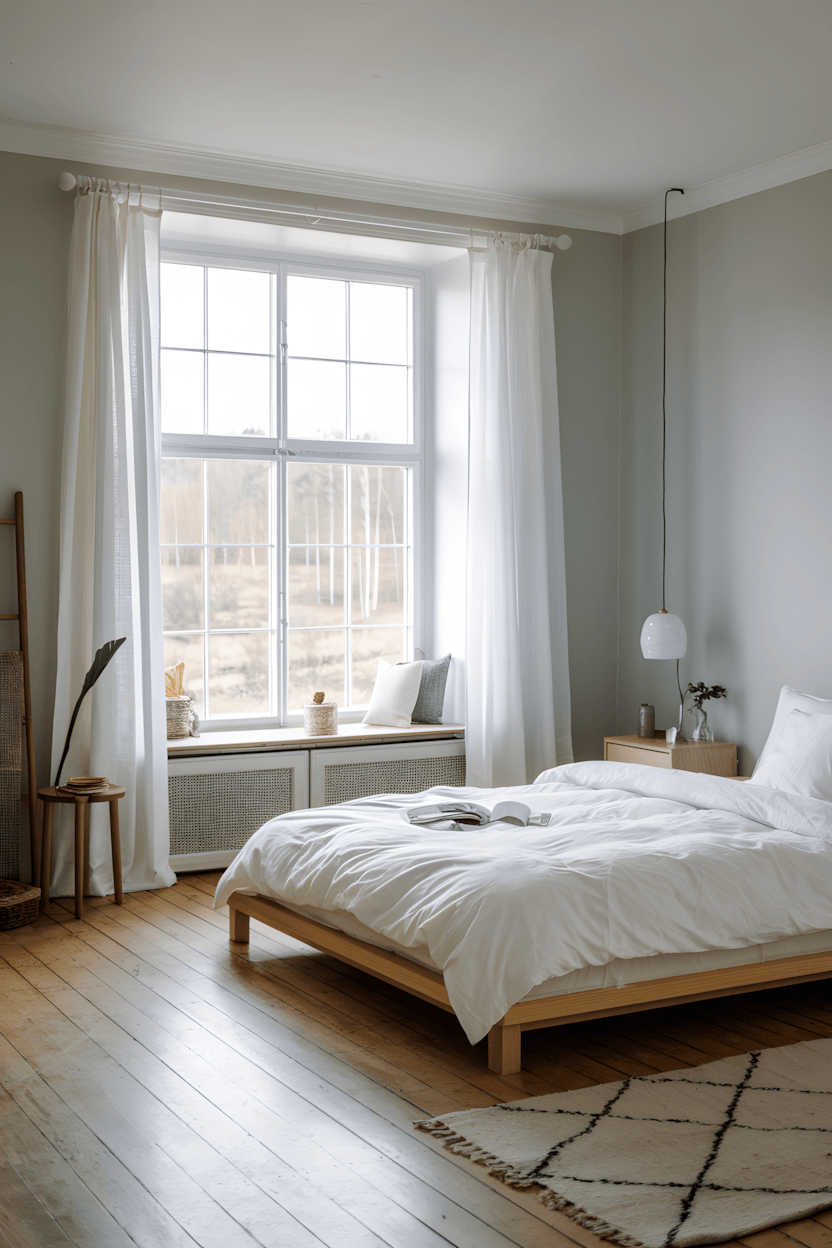
The ultimate goal of Scandinavian bedroom design is creating genuine serenity that supports rest, relaxation, and well-being.
Key Elements:
- Uncluttered spaces that reduce visual stress – eliminates decision fatigue and mental overwhelm
- Natural materials that age beautifully – provides lasting satisfaction without constant updates
- Flexible elements that adapt to seasonal needs – accommodates significant climate variations
- Quality over quantity in all selections – ensures each element contributes meaningfully to overall well-being
Holistic approach: True Nordic design considers physical comfort, mental well-being, cultural connection, and environmental impact simultaneously.
Creating Authentic Scandinavian Bedrooms That Work
After years of implementing Nordic design principles, I’ve learned that successful Scandinavian bedrooms balance three essential elements: genuine functionality for daily living, connection to natural elements and cycles, and quality materials that improve rather than deteriorate over time.
The Scandinavian bedrooms that homeowners love long-term are those that solve real challenges—better sleep quality, improved mood during dark seasons, efficient organization—while reflecting authentic Nordic values of sustainability, craftsmanship, and well-being.
Focus on understanding the principles behind the aesthetic rather than copying surface elements.
Most importantly, adapt Scandinavian principles to your specific climate, lifestyle, and personal needs.
The goal isn’t to create a museum of Nordic design, but to apply time-tested principles for creating restful, sustainable, beautiful living spaces that genuinely support your daily well-being.
Which of these authentic Scandinavian principles resonates most with your vision for better rest and daily comfort?

